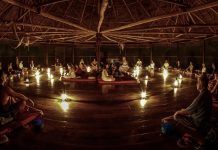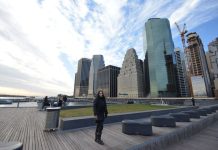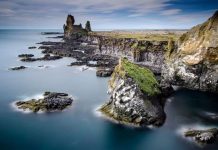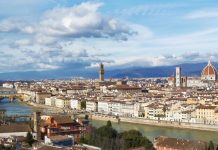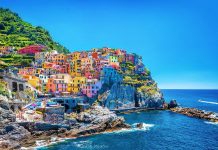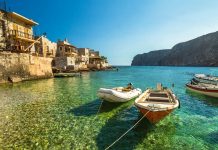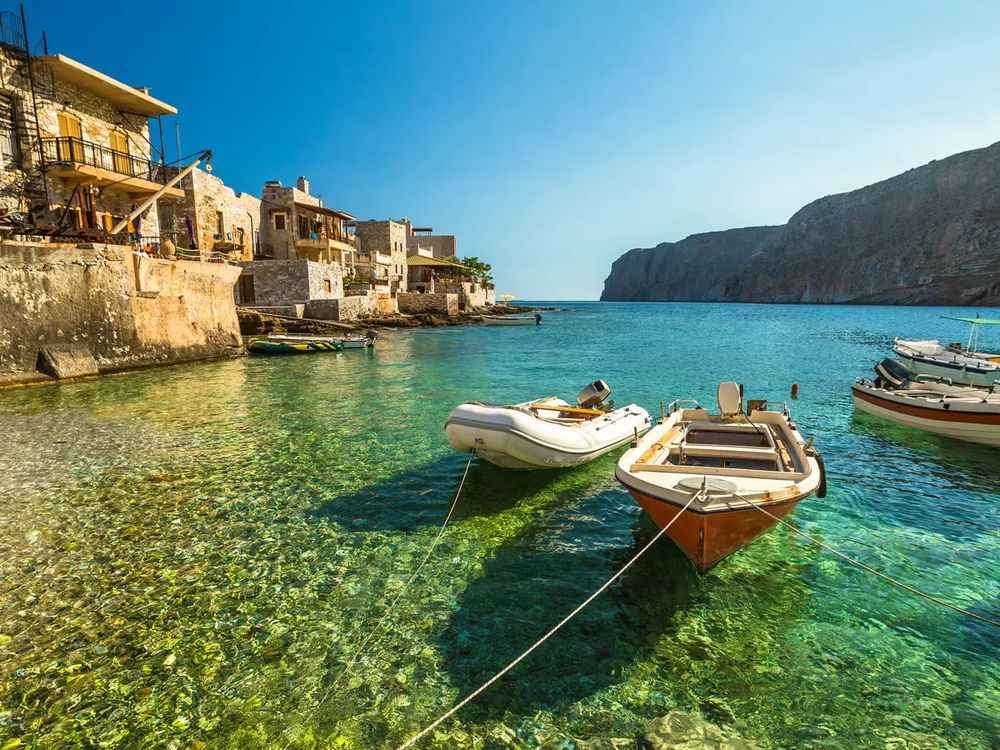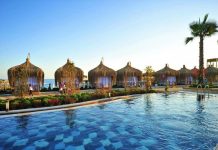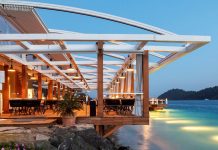Menecrate’s Monument: It has been built in the 6th century B.C. in Garitsa, on the borders of the cemetery of ancient Corfu (Kerkyra) and it was discovered in 1843. The most impressive part of the monument is the archaic inscription of 10 lines, according to which the people of the town created the burial monument in recognition of Menecrates’s offer, ambassador of Corfu. It is considered to be one of the most ancient inscriptions in Greece and there is just one similar monument at Lindos, at Rhodes island.
New Fortress: Its construction started in 1576 and completed in 1645. The fortress is built at the artificial hill above the old port and considered to be a masterpiece of that kind of architecture. It oversees the Town from the western part, between the Old Fortress and the New Port.
Some of the most important sights in the new fortress are the English barracks, the underground tunnels etc. Today, here, the Museum of Ceramic Art is located and many concerts, plays and exhibitions are held.
Old fortress (Paleo frourio): It is located at the eastern side of Corfu (Kerkyra) port and has been constructed on a rocky peninsula, during the Byzantine Empire and was backed by the Venetians and the Englishmen. It started to be inhabited and fortified after the devastation of the ancient Palaeopolis, after the 6th century and it was the Town of Corfu from the 11th until the 15th century. In the 16th century, it was turned into a military area. Today, the interior has been restored and it is used for cultural events.
The most important monuments here are the central gate, the English barracks, the old Venetian prison, the English hospital and the impressive neoclassic church of Aghios Georgios. In the old fortress, you will, also, see the Public Library, the Congress centre and the clock tower.
Paleopolis: It is located at Mon repos and together, they compose the site of the ancient market (“agora”) of Corfu (Kerkyra) town, which evolved from the ancient times till the 6th century A.D. This ancient town was extended from Anemomylos to Kanoni and used to have two ports; the port of Alkinoos and the Illaic port.
The most important monuments of the site are the well-preserved doric temple of Kardaki, the remains of the basilica of Saint Kerkyra (5th century), the agora, the roman baths and a pre-Hellenistic round building, which was transformed into a Christian church during the first Christian era. The biggest temple of ancient Corfu, as it seems from the remains, was that of Hera, located in the right of the palace, but unfortunately it has suffered a lot of disasters.
At the place where the temple of Kardaki was built in the 6th century, today, there are traces of the temple and an internal altar. Although this temple was discovered in the beginning of 19th century, it was abandoned and rediscovered 100 years later. The eastern part of the temple has been precipitated to the sea. Many opinions consider that in this temple Asclepius god or Ippius Neptune was worshiped. To its northwestern, a small temple was found with the statue of Kyveli goddess.
Temple of Artemis Gorgo: At Kanoni area, to the side of Halikiopoulos lagoon, there was the archaic Doric Temple of Artemis (Diana goddess), built in 6th century B.C. and discovered in 1822. Among the gables of the temple, there is the unique and famous gable of Gorgo, the most ancient saved stone gable, well-preserved, picturing Gorgo with her two children, Pegasus and Chrysaor, which is at the Archaeological Museum of Corfu (Kerkyra). Thirty meters at the eastern of the temple, there was a large altar. Today, above the altar, there is the early-Christian monastery of Aghii Theodori and just a few remains of the temple are saved.
Archaeological Sites and Castles at northern Corfu (Kerkyra)
Aggelokastro: Aggelokastro (in Greek it means angel castle) was constructed near the current Krini in the early 12th century and was the westernmost fortress of the Byzantine empire and the Despotate of Epirus.
Inside the castle, you will meet the remains of the rooms and warehouses, two huge water tanks and the churches of Taxiarhes and Aghia Kyriaki, built in a small cave, having frescoes of the 18th century.
Neolithic settlement remains at Sidari: At Sidari, at the northwestern of Corfu (Kerkyra) town (31km), the excavations have through in the light remains of a settlement from the Neolithic age, dated from 3000 B.C. According to the elements it is the most ancient settlement in the island. Here, there are remains of a Venetian castle, too.
Roman baths at Aharavi: The remains of the roman baths were discovered in 1985 in private land during the erection of a house, in the place called “Skales”, in Aharavi. Probably, they are part of a large Roman building complex in northwestern Corfu (Kerkyra). The preserved part of the building includes the hypocaust and the channel that carried water in the baths. The area has been purchased by the Archaeological Service and can be visited by the public.
Temple of Cassius Zeus-Kassiopi castle: At Kassiopi, there was the temple of Zeus in the current location of the church of Panagia Kassopitra and its traces were said to exist until the beginning of the 20th century. It had been built during the Roman years and gave its name to the current town of Kassiopi. During antiquity, Kassiopi (Cassiope) was the second largest town on the island. Here, you will also find the remains of the castle of Kassiopi, which is unknown exactly when it was built. The castle was destroyed by the Venetians, considering that it would be hard to defend both the castle and the port and, today, a few parts of the castle are here to remind it.
Archaeological Sites and Castles at southern Corfu (Kerkyra)
Roman baths at Benitses: At the remains of the roman baths at Benitses, you can admire the exceptional floors, built of mosaic.
Temple of Apollon at Roda: In the recently developed village of Roda, archaeologists discovered, after many excavations in the surrounding area, an ancient temple of the 5th century B.C., an ancient cemetery and the famous, golden statue of Pares. Most of the findings are exhibited in Corfu (Kerkyra)’s archaeological museum. The temple was dedicated to Apollon god and, to its east side, there is the foundation of its altar.

